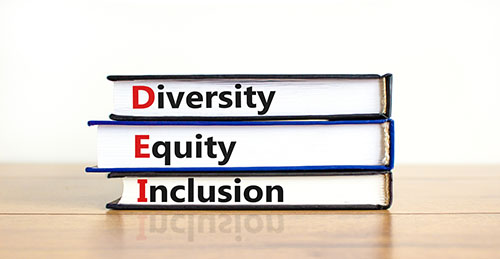
As Diversity, Equity, and Inclusion (DEI) initiatives take root at many organizations, the questions organizations face is whether or not racism exists in the organization, or if the organization simply reflects norms and culture within it. As Roosevelt Thomas Jr., a diversity pioneer, has described in his seminal book, Beyond Race and Gender, the roots of an organization run deep, and they are hard to break. In many cases, social equity initiatives attack these roots to attempt to change the organization into a more inclusive culture.
There are a number of misguided attempts though. Allegedly, AT&T appears to offer training that calls racism a “uniquely white trait” — and tells white employees that they “are the problem.” It’s “Listen. Understand. Act” training is allegedly based on core principles of critical race theory, including “systemic racism,” “white privilege,” and “white fragility,” according to City Journal’s Christopher Rufo, a senior fellow at the Manhattan Institute. The city of Seattle held a training session in 2020 for white employees aimed at teaching them how to “practice self-talk” that “affirms their complicity” in racism and about “undoing” their own whiteness.
And more recently, the Art Institute of Chicago ended its docent program, letting its 82 active docents — most of whom were white older women — know by letter that their program was being ended so it could phase in a new model relying on paid educators and volunteers “in a way that allows community members of all income levels to participate, responds to issues of class and income equity, and does not require financial flexibility to participate.” The museum also stated that the program was unsustainable and had not added docents for a long time. Regardless of intent, the firestorm in the implementation is not going away.
Also, a former AT&T assistant vice president claimed the company engaged in illegal workplace discrimination when it fired him, an older, white male, following a commitment to diversify its leadership (DiBenedetto v. AT&T Services, No. 21-cv-04527 (N.D. Ga., Nov. 2, 2021)). The VP he reported to had primarily had older white males as direct reports. He then discussed the possibility of a promotion with his supervisor, the supervisor explained that it was unlikely: "In these roles, you know, you've got to be able to adapt and move, and I'm not saying you can't, but a 58-year-old white guy, I don't know if that's going to happen." His position was later eliminated, and he sued.
Further, a professor at Rutgers University, Brittney Cooper, a professor of women’s and gender studies and Africana studies, addressed the history of colonialism during a discussion last month about critical race theory with the Root Institute. In the course of her discussion about colonialism, she stated that white people don’t trust society to redistribute power to diverse groups of people “because they are so corrupt,” and that “You know, their thinking is so murky and spiritually bankrupt about power that they … they fear this really existentially letting go of power because they cannot imagine another way to be.” Further, she created greater controversy when she stated that there is no “sufficient” solution to addressing white supremacy. “The thing I want to say to you is we got to take these mother******s out,” she said, though she quickly added that she “doesn’t believe in a project of violence.”
Regardless of these news stories and the hyperbole that followed, organizations need to take a close look at themselves and have hard discussions within leadership to discuss the issues of inclusion, of race, and of change. Racism comes in all forms and in all groups. Most is subtle. Culture is a broad term, and organizations are not inherently bad or racist. Unfortunately, people who join organizations bring in their learnings, beliefs, and attitudes, and those may be counter to an inclusive environment. It doesn’t help, though, when the motives of many driving these discussions are suspect because of the news cycle.
For federal contractors, affirmative action has been a driver of social equity in their organizations. Developing new external and internal pipelines are especially necessary in today’s worker shortage time, an affirmative action specialty. They also review hiring, promotions, and terms to see if there are trends. They conduct pay equity analysis and run statistical analyses on the performance management system.
Hiring a DEI professional may not make any change to an organization. In fact, many leave after only a few years due to their frustration in trying to be a catalyst for change, the mission leadership charges them, when leadership stands aloof. Over time, a committed organization will see changes, first to reduce risk, but then to make an organization take the broader discussion as to why the risk is here. Most importantly, leadership must fully embrace these discussions, understanding the long-term advantage of these discussions, and walk the talk.
Visit ASE's Diversity, Equity, & Inclusion Resources page for DEI strategy resources.
Source: HR Dive 11/18/21, Training 11/11/21 NY Post 10/29/21, New York Times 10/21/21, Washington Examiner 7/7/20